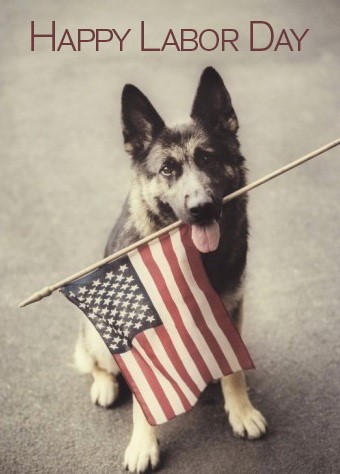Dr. Phil Zeltzman’s Blog
Are you prepared to save your pets if disaster strikes?
Greetings from China, where I was invited to give some conferences about surgery.

September is National Disaster Preparedness Month. The goal is to raise awareness about the importance of planning for your safety BEFORE disaster strikes.
The purpose of this blog is not to discuss what people are supposed to do with themselves.
Since my focus is your pets, let’s go over some information (which is COPYRIGHTED by the way) on how to be prepared for the worst, even though we always hope for the best.
Are you prepared if disaster strikes?
From Katrina-style hurricanes to wild fires, from floods to tornadoes, from blizzards to extreme heat, from earthquakes to mud slides, from tsunamis to active volcanoes, virtually any area of the country can be affected by some kind of natural disaster.
Think that disasters, man-made or natural, only happen to others? It truly can happen to anyone.
- In 1998, a tornado hit peaceful Lyons, PA, causing hundreds of thousands of dollars in damages. Lyons is a whole 22 miles from Allentown, PA!
- Some years ago, when I lived in beautiful Cincinnati, OH, my whole neighborhood was evacuated within a few hours because of a toxic leak (styrene) from a train. Obviously, a toxic leak from a train or a truck could happen to anyone, anytime, anywhere.
- Flooding can affect anyone who lives near a body of water (or not, as California readers know).
You could be told to leave your home “for a short time”, only to find the situation keeps you away from your home for days to weeks.
Would you know exactly what to do with your pet(s)? Do you have a plan you can implement within minutes? Do you have a checklist so you don’t forget anything, even when we are stressed out of your mind? After all, you’ll be running for your life – and your pets’ lives. Being prepared is the first step to ensure that your pet survives.
Familiarize yourself with the types of disasters that could likely affect your area. Then develop an evacuation plan for your animals. Also, know the exact location of several emergency veterinary clinics, and have their phone numbers on speed dial.
In case you are not at home at the time of a disaster, you could place stickers on windows to notify neighbors or emergency personnel that animals are on your property and where they can find your evacuation supplies. Include a list with the number, type and location of all your animals. Have leashes and carriers nearby and easy to find. Also, having carrier-trained pets is a good idea. You don’t want to have a huge argument with a stubborn not-declawed kitty or a cranky Rottie in the middle of an evacuation!
If you have a friend or neighbor that you trust and is willing to help, let them know where they can find a key to your property and pre-arrange with them to take care of your animals in case you cannot get back home for some time. This is another reason to have supplies ready and easy to find.
Keep in mind that your pets may smell danger well before you, and may hide in usual or completely new spots.
Make sure that all your animals have proper identification. In addition to rabies and ID tags, microchipping is becoming a popular form of animal identification. After hurricane Rita, there were reports of 3,000 stranded pets DAILY. Many of these pets were never matched with their owner. By the way, a microchip is just half the story: please make sure your pet is registered through an identification program. If you have moved, make sure you notify the organization in charge of your particular chip.
An animal carrier and an evacuation kit are the two most important things to have ready in advance. Place your evacuation kit near the carrier or cage and keep the items in it fresh. This allows for fast action. In case of an evacuation, all you would need to do is put your pet(s) in the carrier(s) and grab the kit. A back pack is ideal to free up your hands.
When an evacuation order is issued, what steps should you take?
- Bring all pets inside
- Make absolutely sure they all have their ID tags on
- Get all pets into their carriers
- Grab your evacuation kit
- Get everyone into the car
- Leave as soon as possible with your pets in the car
- Along the way, call your pre-arranged evacuation site
- Let family, friends and neighbors know where you are going
When you return home, what should you do?
- Look around both inside and out for dangerous objects, animals, or chemicals
- Let your pets have access to the indoor areas only until you can evaluate the outside areas for safety.
- Don’t let animals gorge themselves with food or water
- Return to a normal routine slowly
- Let your pets rest and sleep
- If your pets are lost, call shelters and vet clinics daily and visit lost pet web sites often
- If there has been any injury or exposure to questionable substances, call your vet for a health exam
As we have seen in several recent disasters, some people refuse to evacuate without their pets. Leaving your home with your family and pets in an emergency is the right thing to do, but it takes pre-planning. You could save your pet’s life.
Plan now so that you can act fast when minutes count.
Remember, it is very easy to procrastinate with all these things. This is just like fire insurance: You really need it, and at the same you sure hope you never have to use it. The same can be said about disaster preparedness. You owe it to your pet(s).
Until next time,
Phil Zeltzman, DVM, DACVS, CVJ

Dr. Phil Zeltzman is a traveling veterinary surgeon in Pennsylvania & New Jersey. An award-winning author, he loves to share his adventures in practice along with information about vet medicine and surgery that can really help your pets. Dr. Zeltzman specializes in orthopedic, neurologic, cancer, and soft tissue surgeries for dogs, cats, and small exotics. By working with local family vets, he offers the best surgical care, safest anesthesia, and utmost pain management to all his patients. Sign up to get an email when he updates his blog, and follow him on Facebook, too!
10 tips for a safe Labor Day barbecue with your pets
While fun for people, barbecues can causes many problems in pets. Here is a quick list to keep your pets safe today.

10 tips for a safe Labor Day barbecue with your pets
1. Lighter fluid is toxic to pets.
2. Trimmings and fatty food can cause pancreatitis (inflammation or irritation of the pancreas). Pancreatitis causes vomiting and severe belly pain.
3. Bones can be dangerous! Despite what many people think, bones are potential foreign bodies. I’ve removed many bones stuck in the stomach, the intestine or worse, in the esophagus (the tube between the mouth and the stomach, usually in the part inside the chest…)
4. A corn cob fed to a dog, while it seems to amuse some humans, can get stuck in the small intestine. This is a classic and serious (and potentially deadly) condition. It has a specific pattern on X-rays, but it may be barely visible and therefore very difficult to diagnose.
In addition, it usually stays in the GI for days before a diagnosis is made, which may mean that part of the intestine will need to be removed during surgery.
5. Fruit salads. Although healthy and refreshing for humans, fruit salads can contain hidden dangers for pets. Grapes (and raisins BTW) are toxic to pets’ kidneys.
6. Secure all trash cans. Even the best-behaved pet may have a hard time resisting the sweet smell of leftovers in a trash bag or a trash can.
7. Guacamole. Many of us love a good guacamole dip. Unfortunately, it contains 3 toxic ingredients for dogs: garlic, onion and avocado!
8. Hot barbecues, oil and food can cause serious burns to curious pets.
9. Sugar-free food. You or your guests may have used a preparation with an artificial sweetener called xylitol. This is extremely toxic to pets, who can have hypoglycemia (low blood sugar) or even liver failure because of it.
10. Chocolate. This is another classic: chocolate is toxic to pets. The darker the chocolate, the worse it is for pets.
Bonus 11. Having guests over means that somebody at some point may forget to shut the door or the gate, which may be an opportunity for your pet to run away, get lost, and possibly get hit by a car. It may be safer to lock your pets away to avoid a disaster that may spoil the day – at best.
Keep in mind that the advice above also applies to kids and guests. They may have good intentions, but that can lead to serious trouble!
Follow this simple advice, don’t end up at the veterinary emergency room and enjoy your barbecue!
Until next time,
Phil Zeltzman, DVM, DACVS, CVJ

Dr. Phil Zeltzman is a traveling veterinary surgeon in Pennsylvania & New Jersey. An award-winning author, he loves to share his adventures in practice along with information about vet medicine and surgery that can really help your pets. Dr. Zeltzman specializes in orthopedic, neurologic, cancer, and soft tissue surgeries for dogs, cats, and small exotics. By working with local family vets, he offers the best surgical care, safest anesthesia, and utmost pain management to all his patients. Sign up to get an email when he updates his blog, and follow him on Facebook, too!
Today is National “Take Your Cat to the Veterinarian Day”
Today is National “Take Your Cat to the Veterinarian Day”
Who knew this day even existed? Also, did you know that cats go to the vet much less commonly than dogs?
To celebrate National “Take Your Cat to the Veterinarian Day,” following are a few tips to make the trip to the vet more pleasant for everybody involved.
No question, going to the vet can be stressful. How can we make it a happier event?

1. Help your cat like the carrier
Even as an adult, you can train your cat to tolerate the carrier. Plus, your cat may end up using it at home as a security blanket or yet another napping spot.Here is a video to help you reach that goal.
2. Look for a Cat-Friendly Veterinarian
This is tough one for me. I am certainly not trying to encourage you to leave your current family vet. But if your cat doesn’t go to the vet because it’s such a disaster every time, I suspect this won’t offend anybody.
The American Association of Feline Practitioners has created a program that certifies vet clinics as “cat friendly.” You can find a list of them on their website.
For example, cat friendly vets know that cats prefer to stay in their carrier during their exam if at all possible. Their waiting rooms are segregated by species (cats vs. dogs) to avoid the risk of a cat coming nose-to-nose with a curious canine.
3. Reward your cat
Talk to your cat during the trip (don’t worry, people will think you are talking to someone on the phone). Pet your cat. Bring tasty treats with you (as long as your cat doesn’t have to be fasted for blood work or anesthesia).
Regular preventive health care is important for cats.
Here are a few facts:
- Dental disease affects 68% of all cats over the age of 3.
- Most cases of diabetes could be avoided if the more than 50% of cats who are overweight were on the proper diet.
- A huge number of cats die of kidney disease. There are simple ways to detect and treat the condition, or to decrease the risk it might happen in your cat.
- Feeding a good diet decreases the risk of bladder stones or urinary blockage.
- A simple checkup, once or even better, twice a year, can help detect and treat preventable diseases and conditions that can cut a life short.
- Cats need vaccines and parasite prevention to be fully protected. And rabies vaccination might be the law where you live.
4. Don’t go to the vet!!!
What? Isn’t that the opposite of everything I wrote above?
Please hear me out. If taking your cat to the vet is just too stressful, consider calling a house call vet.
There is even a chance your current family vet offers that service. Or might consider it. Call your vet clinic and ask if that is an option.
5. Start early
Clearly it’s better to start the training during kittenhood. Next time you adopt a kitten, remember to start the training early.
Go to the vet clinic just for the experience of it, even if nothing happens there.
Ask if staff members have time to interact with your kitten.
No vaccines though! It just to show your cat that the vet clinic is a friendly place! I hope these tips encourage you to go to the vet more often – for your cat’s benefit.
Until next time,
Phil Zeltzman, DVM, DACVS, CVJ

Dr. Phil Zeltzman is a traveling veterinary surgeon in Pennsylvania & New Jersey. An award-winning author, he loves to share his adventures in practice along with information about vet medicine and surgery that can really help your pets. Dr. Zeltzman specializes in orthopedic, neurologic, cancer, and soft tissue surgeries for dogs, cats, and small exotics. By working with local family vets, he offers the best surgical care, safest anesthesia, and utmost pain management to all his patients. Sign up to get an email when he updates his blog, and follow him on Facebook, too!

